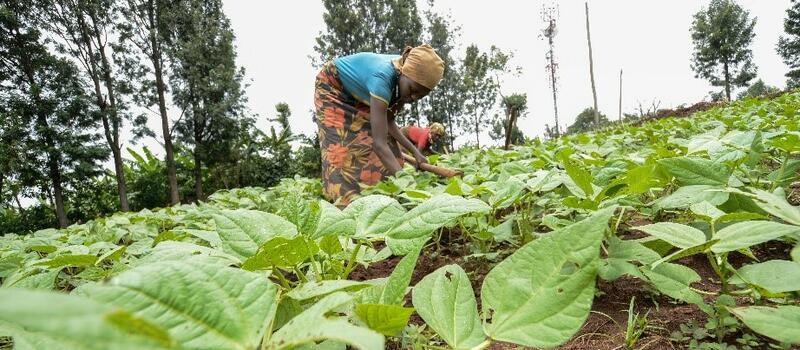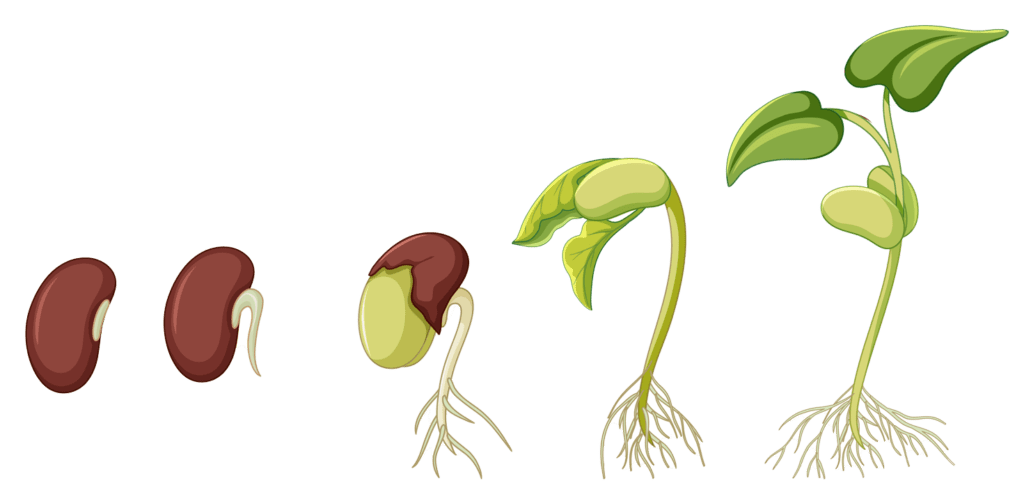
Growing Season: The growing season for bean cultivars can be categorized into short (85–94 days), medium (95–104 days), and long (105–115 days), based on temperature, especially night temperatures, during the growing period.
Climate: Beans require warm temperatures, preferably between 18°C and 24°C. The maximum temperature during flowering should not exceed 30 °C, as it can cause flower loss and low pod set, leading to yield loss. Daytime temperatures below 20 °C can delay maturity and cause empty pods to develop. The optimum rainfall requirement for bean growth is 400–500 mm during the growing season, but the ideal is an annual total of 600–650 mm.

Land Preparation: Farmers can either use the conventional method or conservation agriculture for land preparation. For the conventional method, a moldboard or disc can be used for deep plowing, and a harrow and roller are used to make the seedbed level. The seedbed should be deep, about 30 cm, level, and firm to ensure better surface contact between the seed and soil, increasing moisture absorption. A level seedbed also facilitates planting at a uniform depth. For conservation agriculture, a direct seeder may be used for planting along with a non-selective herbicide for controlling established weeds and a selective pre-emergence herbicide for early weed control. Farmers can also use a ripper to make a planting furrow. For manual labor, holes or basins can be dug to a depth of 15 cm, and planting stations have been done to the required spacing.
Planting: The time of planting depends on factors like the correct soil temperature (not less than 13 °C), the probability of rain, the possibility of higher temperatures later in the season, and crop rotation programs, among others. Planting can be done between mid-December and March for the rainy season, while farmers in the Lowveld can plant beans from April – May, as long as they are assured that no frost occurs in their region during the cold months of June and July. Farmers in the Highveld may plant from the end of July – August. The seed rate is between 100 – 120 kg/ha for large-seeded varieties and 30 kg – 50 kg/ha for small-seeded varieties.
Inoculation of Dry Bean Seed: Beans can obtain much of their nitrogen requirement from the air within the soil surrounding their roots through a mutually beneficial relationship with soil bacteria called Rhizobium. Farmers should inoculate the seed at the time of planting to enhance nitrogen fixation, reducing the need for supplementary nitrogen in the crop. Inoculation is the process of introducing the appropriate Rhizobium bacteria to the soil in numbers sufficient to ensure successful nodulation.
Storage: Beans should be dried before storage to avoid moisture content that may cause sprouting, which results in a lower-quality product. They should be stored in a cool, dry, and well-ventilated place to reduce the risk of storage pests and diseases.
By following these guidelines, farmers can grow beans successfully in Zimbabwe and Zambia.


















